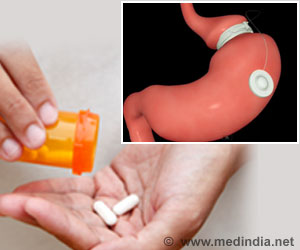- Meftal or mefenamic acid is a commonly used pain killer frequently used to relieve acute pain
- The Indian Pharmacopoeia Commission released a safety alert on adverse reactions to Meftal painkiller //
- Meftal drug’s adverse effects can result in hypersensitivity reactions including DRESS syndrome, eosinophilia which can be life-threatening
All About Meftal Painkiller
Meftal, also known as mefenamic acid, is a non-steroidal anti-inflammatory medication (NSAID) that is a member of the anthranilic acid derivative class. It is commonly prescribed for treating menstrual cramps, rheumatoid arthritis, osteoarthritis, dysmenorrhoea, inflammation, fever, and dental pain.Indian Govt Warns On Adverse Effects of Meftal
According to the alert from the Pharmacovigilance Programme of India (PvPI), a preliminary analysis of meftal drug adverse reactions revealed drug reactions with eosinophilia and systemic symptoms (DRESS) syndrome.Drug-induced hypersensitivity syndrome, commonly known as drug response with eosinophilia and systemic symptoms (DRESS) syndrome, is a potentially fatal condition (1✔ ✔Trusted Source
Drug Reaction with Eosinophilia and Systemic Symptoms: An Update and Review of Recent Literature
Go to source). DRESS syndrome is diagnosed with the presence of skin rash, liver involvement, fever, hypereosinophilia, and lymphadenopathy (2✔ ✔Trusted Source
Mefenamic Acid Induced Nephrotoxicity: An Animal Model
Go to source). Systemic involvement is correlated with the severity of this condition and can lead to multi-organ failure (3✔ ✔Trusted Source
LiverTox: Clinical and Research Information on Drug-Induced Liver Injury [Internet].
Go to source).
Early diagnosis and prompt withdrawal of the suspected offending medication are crucial steps in the management of DRESS. In order to provide proper supportive care and infection control, patients diagnosed with DRESS syndrome should be placed in an intensive care unit. Although systemic therapy using steroids and other immunosuppressants is typically necessary to lower morbidity and mortality, topical corticosteroids can provide symptomatic relief.
The notice stated that in the event that such a reaction occurs, individuals should report the situation to the PvPI's national coordination center, which is under the commission. They can do this by submitting a form on the PvPI's website, www.ipc.gov.in, or by calling the PvPI Helpline at 1800-180-3024 or using the Android mobile app, ADR PvPI.
References:
- Drug Reaction with Eosinophilia and Systemic Symptoms: An Update and Review of Recent Literature - (https://www.ncbi.nlm.nih.gov/pmc/articles/PMC5838752/)
- Mefenamic Acid Induced Nephrotoxicity: An Animal Model - (https://www.ncbi.nlm.nih.gov/pmc/articles/PMC4137432/)
- LiverTox: Clinical and Research Information on Drug-Induced Liver Injury - (https://www.ncbi.nlm.nih.gov/books/NBK548029/)










